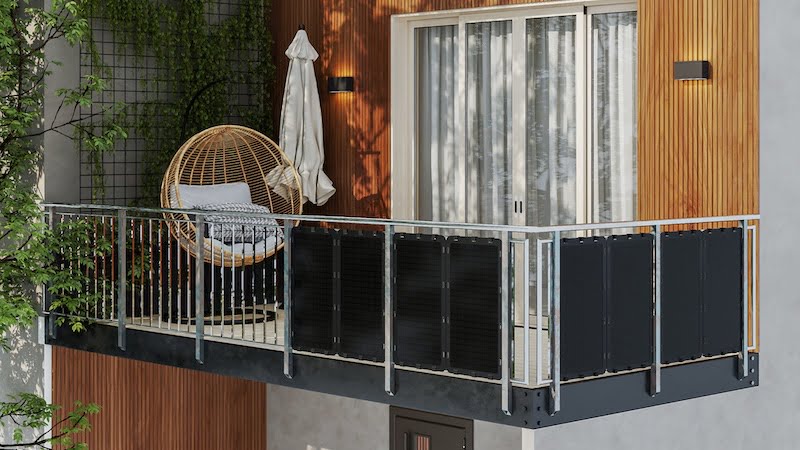
Since the rise in energy prices, balcony power plants are more in demand than ever. Meanwhile, politicians are trying to lower the hurdles for purchase and operation. Still, there are some pitfalls. That’s why we reveal how you can avoid getting in trouble with your landlord or neighbors.
They are small, comparatively compact and fit on almost any balcony: we are talking about so-called balcony power plants, which have become increasingly popular since energy prices have risen. No wonder, because a few kilowatt hours of energy can be generated independently for comparatively little money. But what do you have to pay attention to with a balcony power plant?
Anyone who thinks that you can simply buy such a solar system in a hardware store or online and get started right away is wrong. The Federal Ministry of Economics and Climate Protection (BMWK) wants to simplify the process, which is part of the federal government’s photovoltaic strategy. Nevertheless, there are a few things to consider when purchasing and operating.
Balcony power plant: Installation decides on legitimacy
A maximum feed-in limit of 600 watts continues to apply. Plants that exceed this performance generally require a much more complicated approval process. It also depends on where the modules are installed.
If they are simply lying on the balcony, approval from the landlord is not necessarily required. The situation is different for systems that the tenant wants to mount on balcony parapets or on walls. In principle, this is a structural change that requires the consent of the landlord or the owner company.
In addition, courts have made relatively different decisions in the past. If a system impairs the appearance of a building and cannot be easily dismantled, owners can take legal action to have it removed. In inconspicuous cases, on the other hand, there is more to be said for the tenant.
New federal government plans simplify installation
But that should soon change with the plans of the federal government. If everything goes according to plan, tenants should soon be able to install systems with an output of up to 800 watts in order to avoid having to report twice to the Federal Network Agency and the network operator. It should also be possible to run counters backwards until further tests have been completed.
So far, this has only been permitted in exceptional cases. If you operate a balcony power plant, you have to make sure that you use all of the electricity or feed it into your own grid “for free”. If the legal hurdles disappear, the adaptation should increase rapidly.
Balcony power plant: tips for tenants and apartment owners
Like the consumer law firm Rightmart citing a study by HTW Berlin, around 128,000 balcony power plants were installed nationwide in 2020 and 2021.
However, since the legal situation for the operation of such systems is still vague, the law firm has drawn up a checklist with eight points to safely operate a balcony power plant.
- Feed-in limitation of maximal 600 Watt
- rental contract check for permission and requirements
- Renter: Written permission obtain from the landlord
- Registration at the Federal Network Agency and at the distribution network operator
- power socket available?
- comply with building regulations (crash, fire protection)
- Apartment owners: Written consent of the community of owners
- glare on Neighbors take into account
Also interesting:
Source: https://www.basicthinking.de/blog/2023/04/19/balkonkraftwerk-tipps/


